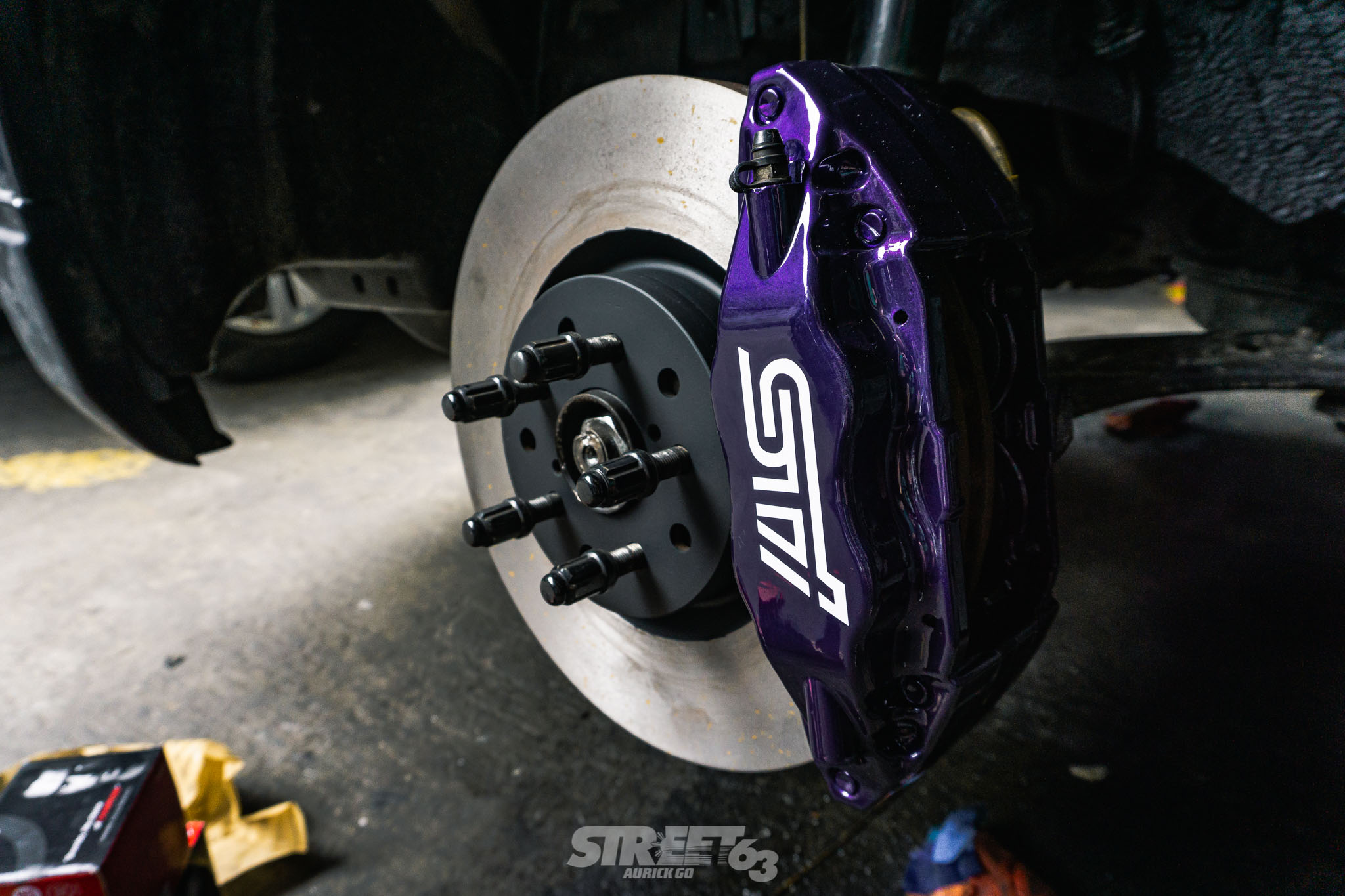Easier Than It Looks: Doing Your Own Oil Change
With the way the world is today, we are going to have to do things a bit differently in order to maintain our health. This means less going out, no more parties, no more car meets, and less trips to our friendly neighborhood auto shop. (We’ll give you a moment to cry). We have to highly consider the importance of leaving the house these days, but if you’re one to take the bull by the horns when it comes to taking care of your car this doesn’t have to mean the maintenance stops at that. Knowing how to work on your car is an essential skill, especially given these circumstances. To get us started, Motul Philippines shows us how we can perform one of the basic services for our vehicles.
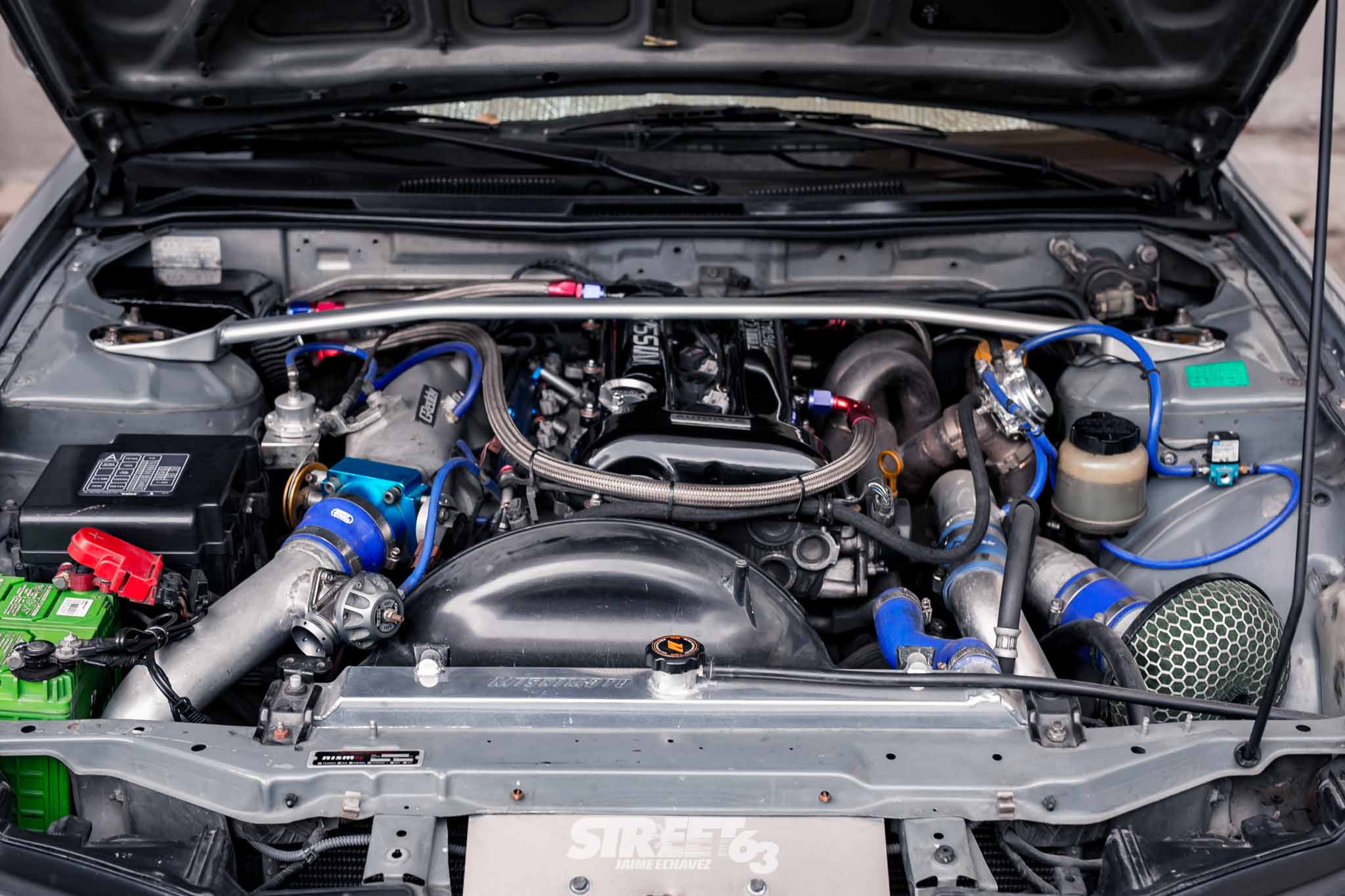
One of the very basic things that a car needs is fresh oil in its engine. Literally being the lifeblood that keeps the whole system going, your oil will need a routine flushing and replacement at certain intervals (which we will not go into. Check your service manual and/or google.) What we will show you today though is a general step-by-step on how to do your own oil changes at the comfort of your own home… well, garage floor.

Step 1: Prepare your tools and jack up the car
The following are all the tools you’ll need to perform an oil change to your vehicle:
- Floor jack
- Jackstands
- Wrenches (10mm, 12mm, and 14mm are usually your go-tos)
- Oil Filter Chain Tool
- Oil Drain Pan
- Fresh Oil (duh)
- Oil Filter
- Drain Plug Thrust Washer
- Funnel
What you have to understand is the oil that keeps your engine running sits at the bottom of the engine in a bowl called the oil pan. In order to reach this pan you will most likely need to jack up the vehicle and drain the oil from there. There are two key points here to make sure the car is jacked up properly:
Know where your car’s jacking points are.
NEVER GO UNDERNEATH THE CAR WITHOUT A JACKSTAND IN PLACE.
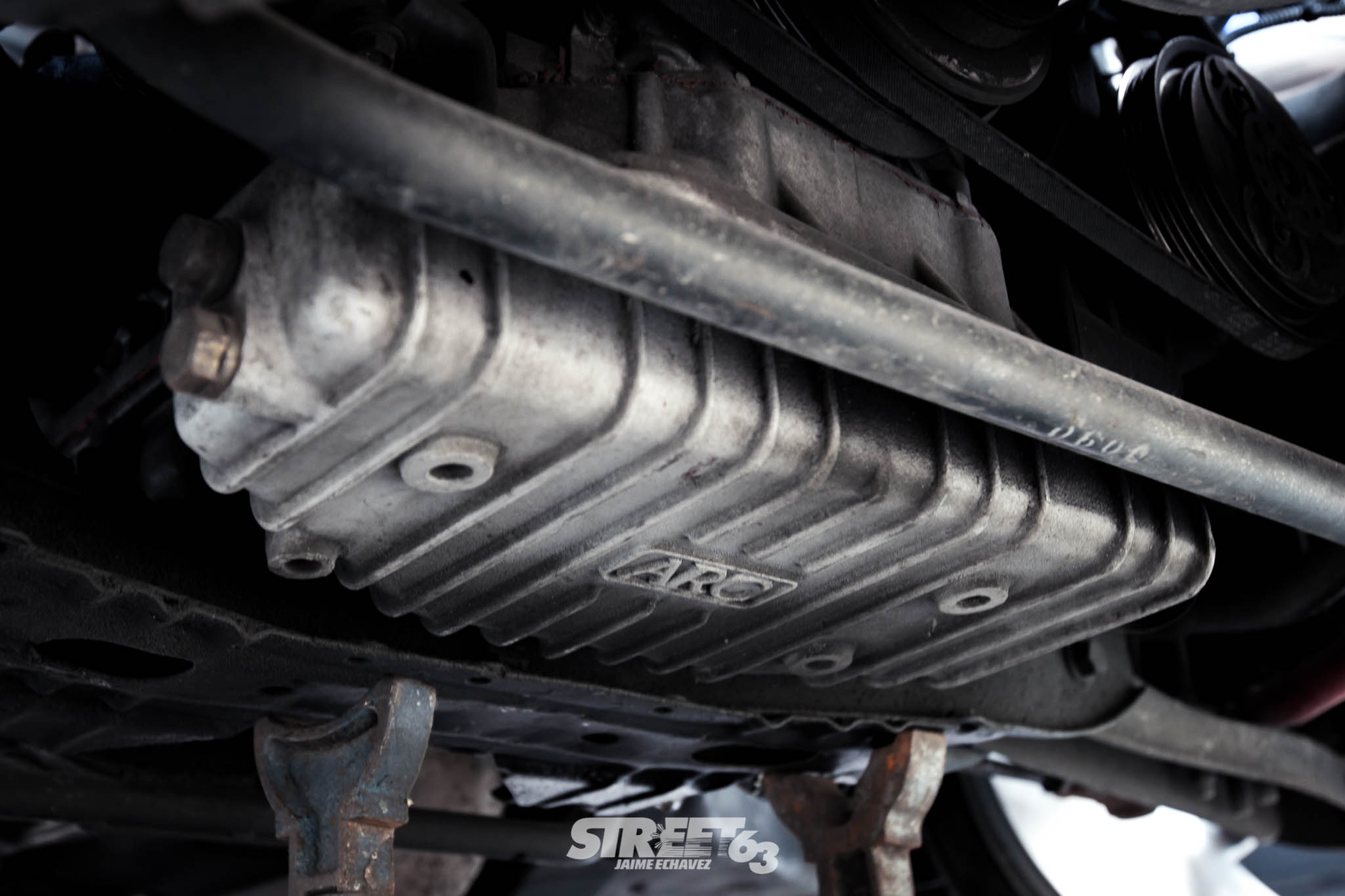
Your vehicle’s service manual will dictate the ideal jacking point (usually underneath the running board) to lift the vehicle. Once sufficiently lifted, slide in and secure the jackstand to keep the vehicle lifted in place. NEVER EVER SETTLE FOR A JACK KEEPING THE CAR LIFTED, lest you want to be crushed underneath the car in case the jack gives way. With your vehicle secured via jackstands, give the body a shake to make sure it isn’t moving.
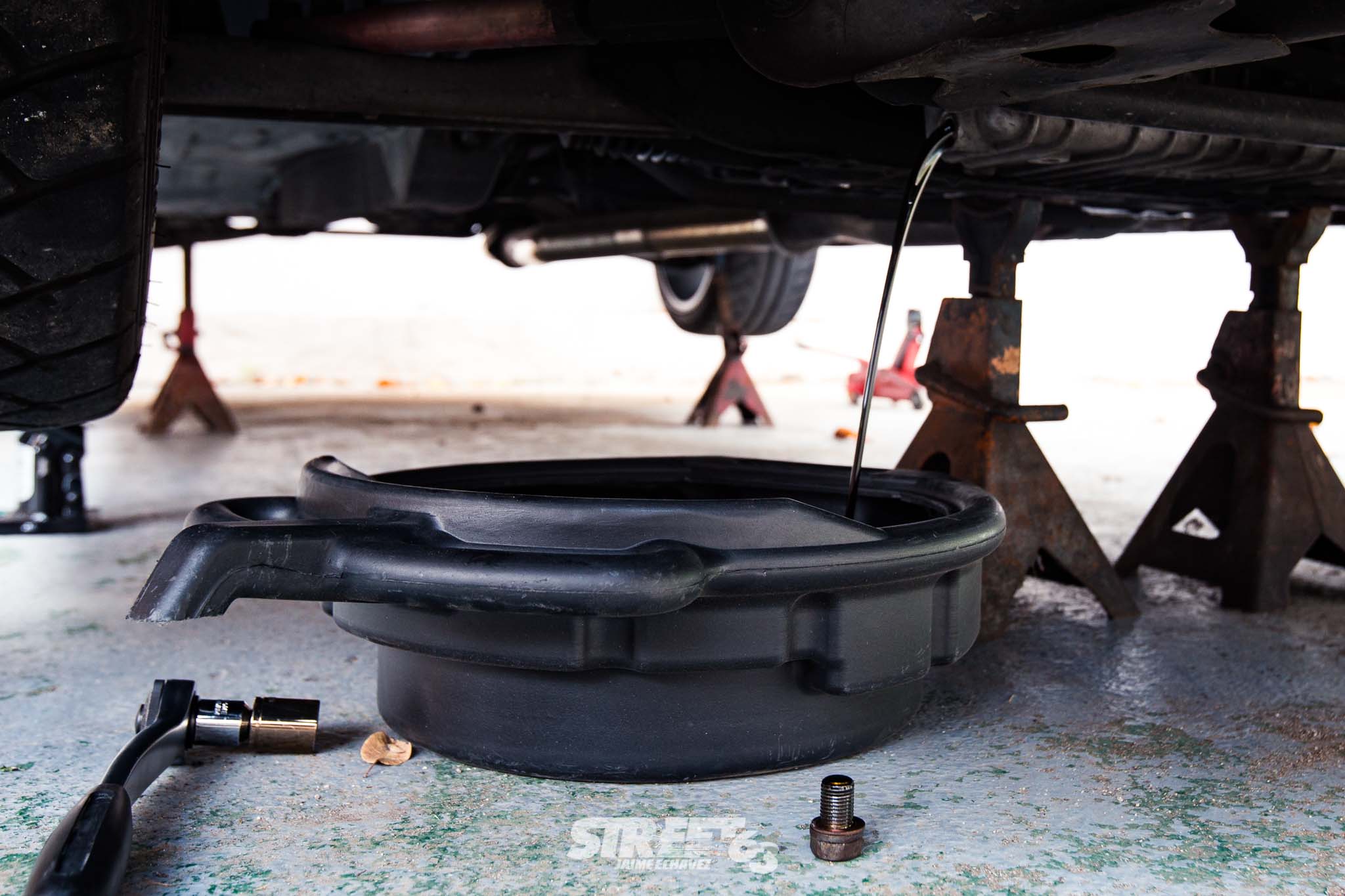
Step 2: Locate the oil pan and remove the drain plug
Once the car is lifted, you will want to find the oil pan and the corresponding drain plug. This pan is usually situated underneath the engine right in the middle of the crossmember. A drain plug is attached to its lower side to allow for oil to drain via gravity and completely empty the pan. Some vehicles may have more than one drain plug to ensure the old oil is completely flushed from the system. Drain plugs have varying sizes, which is why we mentioned having a few wrench sizes handy to remove the plug. Have a drain pan ready underneath before unbolting the drain plug from the oil pan and move a bit to the side of where the oil will spurt out – this bit could get a little dirty. Removing the oil filler cap may speed up the draining process but generally draining the oil may take awhile. You could leave it for a bit and make sure to proceed to the next step when oil is no longer dripping from the pan.
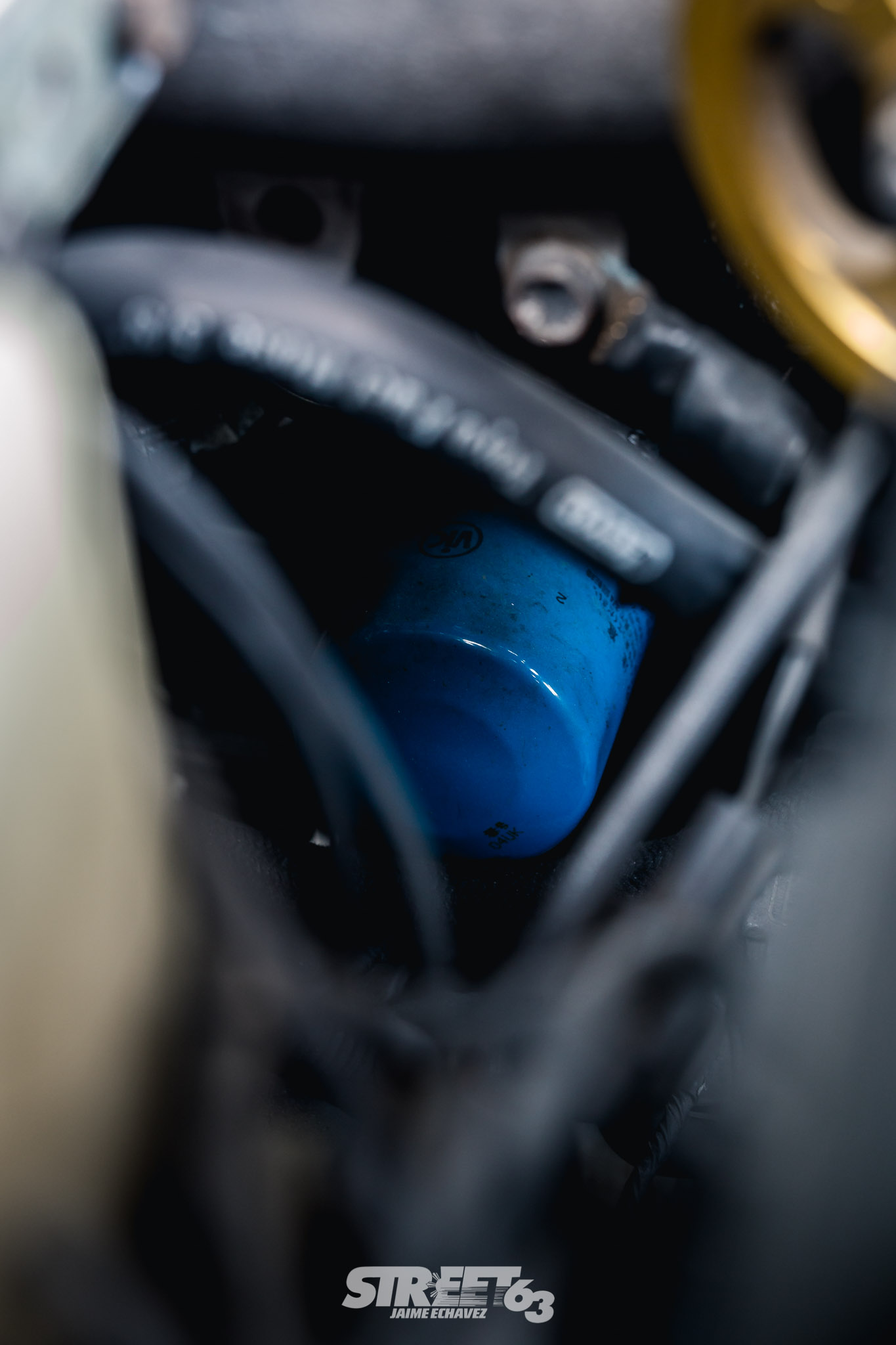
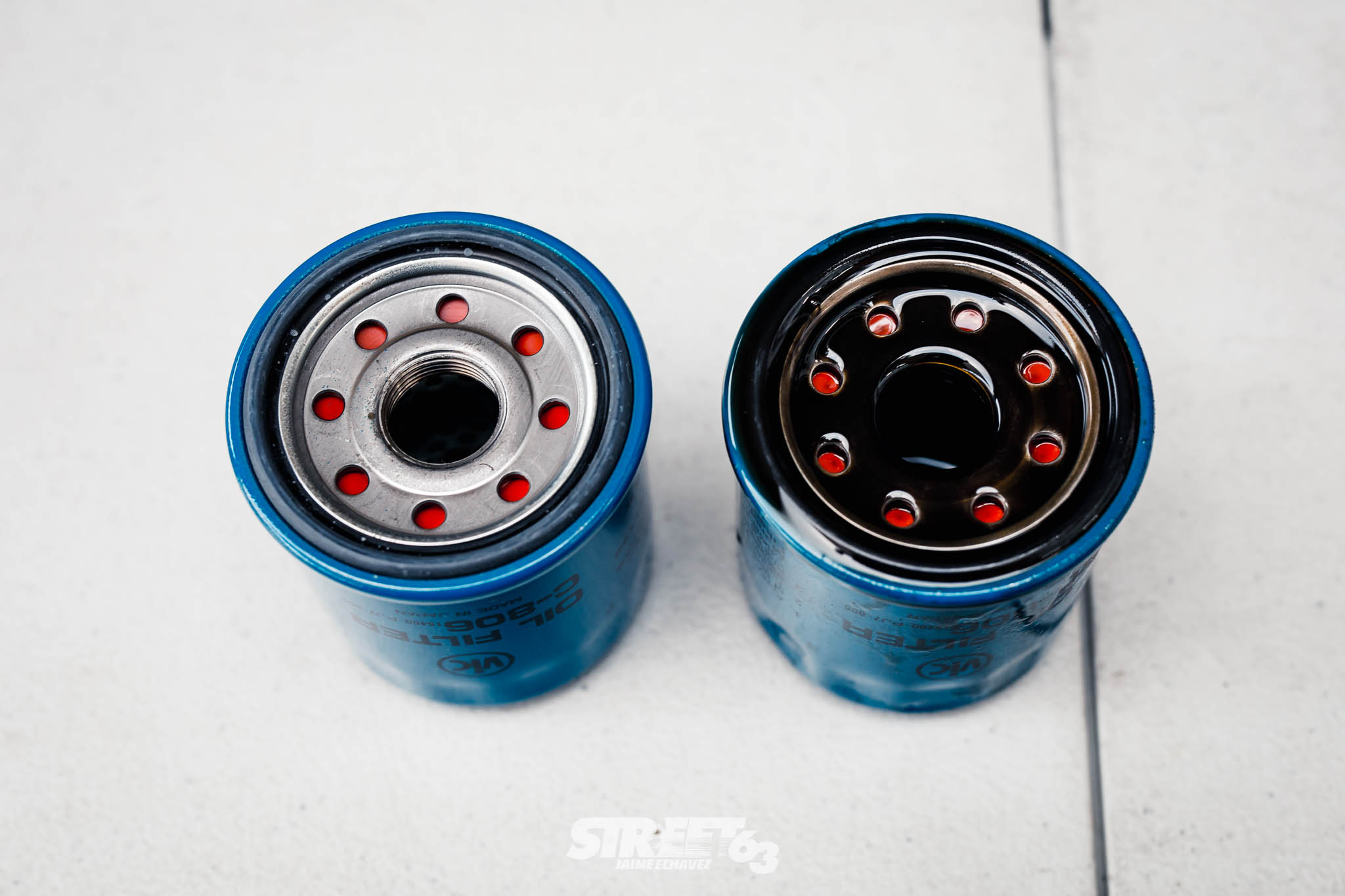
Step 3: Locate and remove the old oil filter
The next step is to remove the filter that prevents the odd metal shaving from contaminating the oil going into the engine. Depending on the motor these oil filters are usually found in tight spots attached to the engine. Considering the nature of this particular filter, these aren’t exactly removable by hand either – you will need what is called an oil filter chain tool to aid with loosening the filter. When using this tool make sure it isn’t caught up in any wires or hoses to avoid any damage to your engine. Again, when loosening this filter a bit of oil will also drip from it, best have the drain pan ready for this bit too. Once removed make sure to clean any oil that dripped on cables or hoses – more dirt means more problems down the road.

Step 4: Prep, lubricate, and install the New Oil Filter
Oil Filters have a rubber seal as well as a specific thread pitch that needs to be matched to your vehicle to ensure a proper seal. That latter bit means you should do your research and find an appropriately sized filter for your vehicle. You will need to lubricate the rubber seal with a finger dab of fresh oil around its surface. It isn’t particularly necessary to pre-fill an oil filter before installing it onto the car – that may just end up dripping out as you tighten it anyway. Once lubricated, thread the filter onto its pedestal and hand tighten it to make sure it doesn’t come loose at any time. Clean any remaining oil spills around this area once you’re done.

Step 5: Return the drain plug
Common sense dictates you cannot fill up with fresh oil with a hole left underneath – you’re going to have to return that drain plug. Once again you’ll need that wrench to hand tighten the drain plug back into place (or use a torque wrench if you’re OC). A ratchet may also be a good way to seal this back in to place provided you have enough room to swivel it. It’s also best to replace the drain plug’s thrust washer every time the oil gets drained, so slip one in there for good measure.

Step 6: Put New Oil In
When you consider the location of your oil filler neck and everything surrounding it, you wouldn’t want to make a mess by just thrusting the bottle of oil down there. A funnel makes life so much easier at this point so you keep the bay clean and not waste any of that precious Motul oil. Every motor has its own manufacturer/builder recommended viscosities and capacities – make sure to consult with your mechanic and/or service manual for proper specifications. For Jaime’s S15, Motul 300V in 15W-50 is the go-to considering his SR20’s specifications.
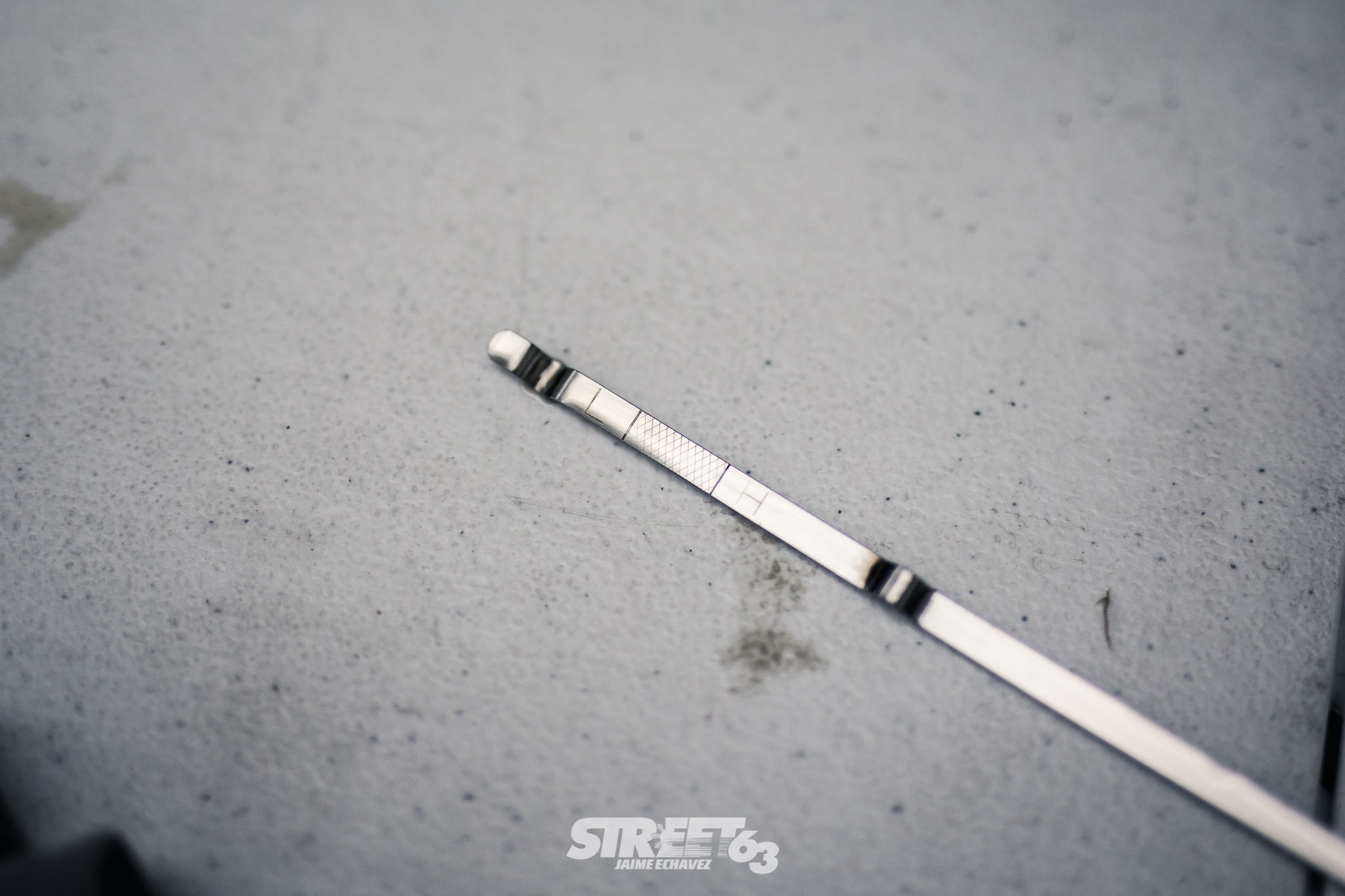
Make sure to check the dipstick as you approach the specified amount of oil to avoid overfilling the motor with oil. Doing so may cause a bit of burnt oil coming out of places you don’t want it to.
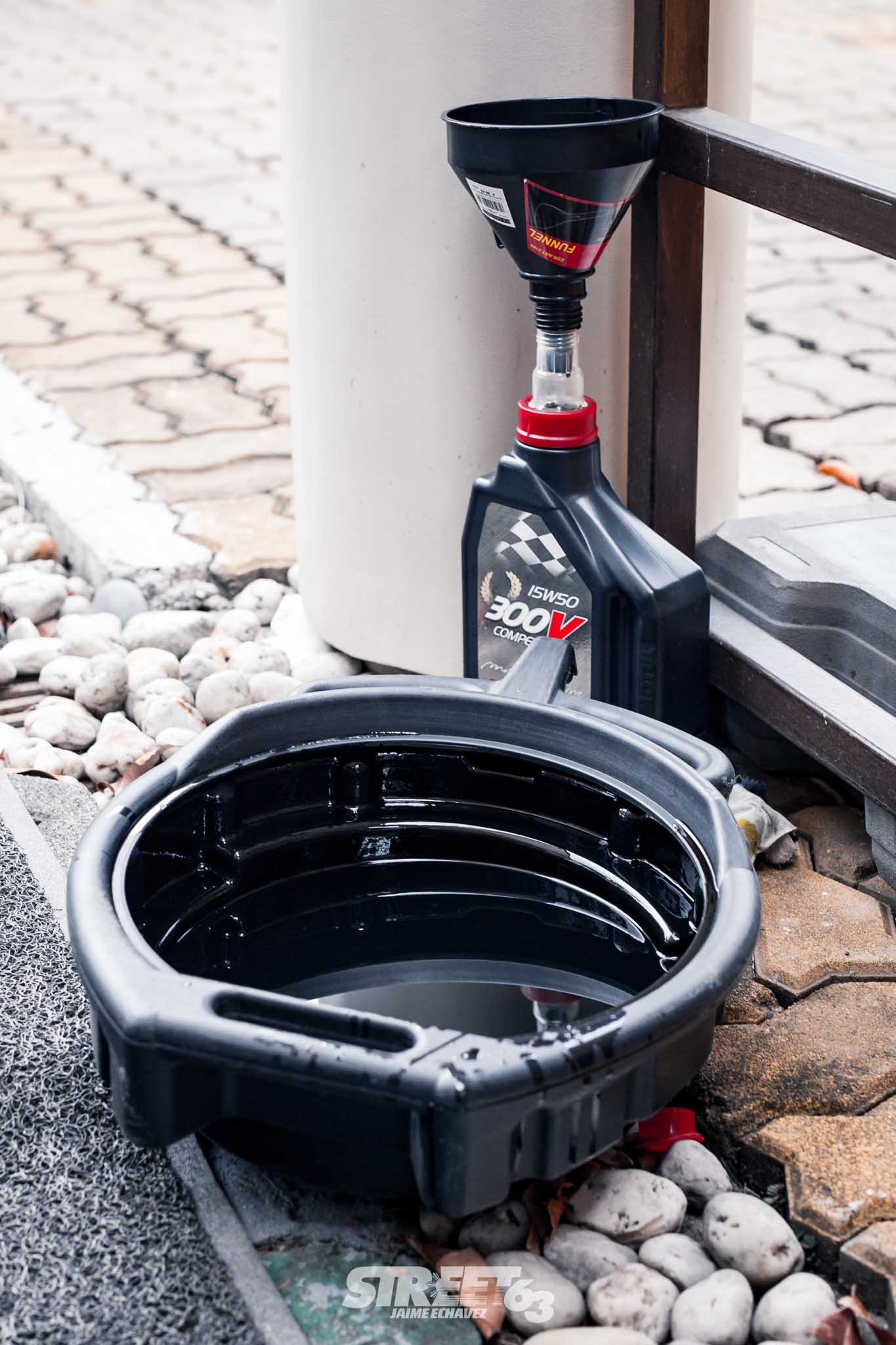
Avoid disposing your old oil in your home’s drainage – you’d be contributing more to floods with our already-clogged sewers. Place the oil in used bottles and ask nearby gas stations/service centers to dispose of the oil properly.

Step 7: Start the car and inspect for any leaks before dropping the car
Pretty self explanatory, do a once over to see if you did a proper job of servicing your vehicle. Dropping the car back on the ground is simple enough, just go easy on relieving the pressure from the floor jack so your vehicle doesn’t abruptly drop to the ground – you could ruin some suspension bits that way.
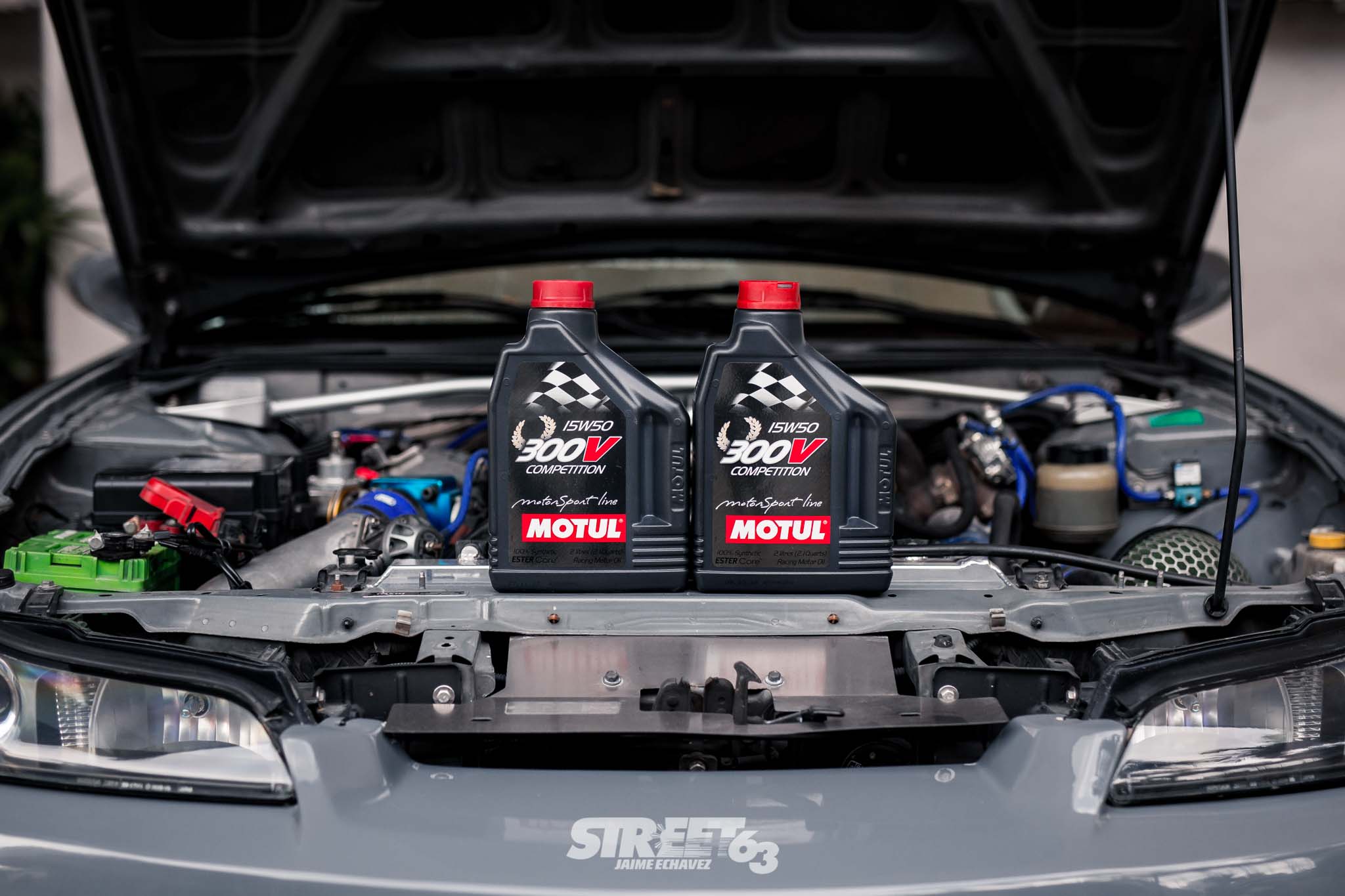
Wanna do your own oil change? Motul Philippines has you covered - simply fill out this form and a Motul Philippines representative will gladly assist you.
Words by Aurick Go
Photos by Jaime Miguel Echavez


